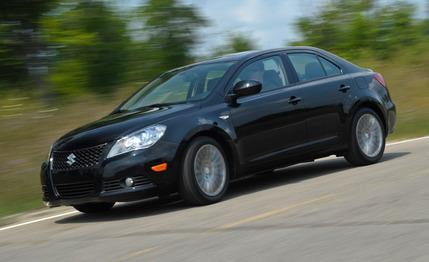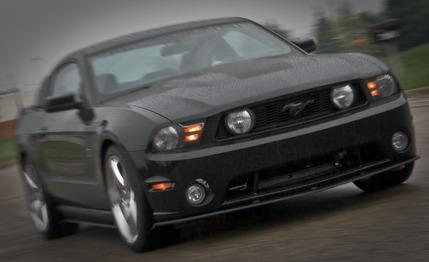 Short Take Road Test
Short Take Road Test

Suzuki hasn’t exactly been a major player in the mid-size-sedan sweepstakes, which makes some of the pre-introduction hyperbole surrounding the company’s new entry a little difficult to digest. A sample: “With the launch of the Kizashi, Suzuki delivers a unique blend of dynamic performance attributes with premium design aesthetics and craftsmanship yet to be experienced in this category.”
This grandiloquence could well raise expectations a little above the realm of reality; one could be forgiven for thinking that Suzuki had reinvented the wheel. But we’d be perfectly comfortable with a statement characterizing this new sedan as the best Suzuki passenger car by far. Built in Korea by Daewoo, the 2004–’06 Verona—the Kizashi’s predecessor—was competent but as forgettable as the fifth-place finisher in last year’s Kentucky Derby.
However, the real litmus test is how this newcomer stacks up in today’s mid-size-sedan field that’s loaded with talent.
At 183.1 inches long, 71.7 inches wide, and 58.3 inches tall, with a 106.3-inch wheelbase, the Kizashi is small by the expanding standards of its class; a Honda Accord is 11 inches longer.
The standard—and only—engine is a 2.4-liter, DOHC 16-valve aluminum four. It’s also employed in the Grand Vitara but in this application generates more power: 185 horses and 170 pound-feet of torque, numbers that rank high in the mid-size, four-banger power grid.

Suzuki may (or may not) offer V-6 and hybrid options later. However, the Kizashi does offer other powertrain choices. The standard transmission is a six-speed manual. There’s also a Jatco CVT automatic, optional in front-drive editions, standard for buyers who choose all-wheel drive.
The CVT includes paddle shifters as well as a manual mode with six programmed “speeds.” It’s not as wheezy as some in full automatic operation, but in manual mode, the shifts are soggy and forward progress is leisurely, particularly with the added weight of all-wheel drive: 0 to 60 mph comes in 9.4 seconds, the quarter-mile in 17.4 at 83 mph. The pace picks up for a front-driver with a manual gearbox: 0 to 60 in 7.2—which would have been tops in April’s four-cylinder sedan comparison involving a Ford Fusion, a Honda Accord, and a Mazda 6, all with manual transmissions—and the quarter in 16 seconds flat at 88 mph. Grip, with a set of all-season Dunlop SP Sport 7000 A/S tires (P235/45-18), is impressive, at 0.88 g, and braking even more so: 168 feet from 70 mph.
All these numbers, as well as references to extensive development in Europe that includes time on the Nürburgring (the track must be approaching gridlock, given the number of similar claims), would seem to justify Suzuki’s frequent use of the words “sports sedan” in connection with this car. However, after an hour or two on a country road, the term did not get branded into our memory bank. A little too much up and down motion in the suspension and a little too much weight over the front axle (60 percent) adds up to turn-in reluctance that amplifies as a function of speed. Ditto transient response. Steering feel is the sportiest element in the car’s dynamic portfolio, although it’s unnecessarily heavy.
But if you approach the Kizashi (Suzuki says it means “something good is coming”; an online translation goes with “omen”; and we think it could also be the Bantu word for sneeze) with other priorities, this new sedan could well make you happy. Styling is conservative by the uninhibited standards of Suzuki’s three Kizashi concepts, but it’s far from wallflower. Fit and finish is first-rate, and the interior is above average in terms of materials and design, with enough room in the rear for a pair of adults. Ride quality is smooth and fuel economy (Suzuki projects 20–23 mpg city and 29–31 highway, depending on powertrain) is respectable. You could certainly do worse.